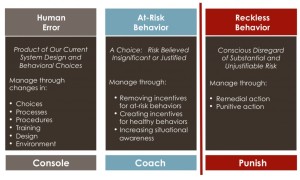At the core of Lean thinking is the concept of Respect for People, and it’s this part– more than continuous improvement and elimination of waste– that makes us believe Lean has so much to offer the long-term and post-acute care environments. Many nursing homes and assisted living communities have already engaged in culture change activities over the past several years, and one of the most crucial elements to success– as well as a benefit in and of itself– is empowering and engaging line staff in the change journey. Lean can complement and strengthen this area, and serves as a link between organizational philosophy and quality improvement activities.
Respect for people is altogether both simple and difficult to understand and implement. For most healthcare organizations, respect means treating employees fairly, providing adequate training and supervision, and providing a safe and stable working environment. In Lean, respect for people is much more involved; it means line staff are understood to be experts of their work areas, supervisors and managers spend time on the floor with line staff, all employees are involved in problem-solving, and errors are generally assumed to be system-induced.
The problem solving process is a key example used in describing respect for people from a Lean perspective, as noted in this e-letter from James Womack, the founder of the Lean Enterprise Institute:
Managers begin by asking employees what the problem is with the way their work is currently being done. Next they challenge the employees’ answer and enter into a dialogue about what the real problem is. (It’s rarely the problem showing on the surface.)
Then they ask what is causing this problem and enter into another dialogue about its root causes. (True dialogue requires the employees to gather evidence on the gemba – the place where value is being created — for joint evaluation.)
Then they ask what should be done about the problem and ask employees why they have proposed one solution instead of another. (This generally requires considering a range of solutions and collecting more evidence.)
Then they ask how they – manager and employees – will know when the problem has been solved, and engage one more time in dialogue on the best indicator.
Finally, after agreement is reached on the most appropriate measure of success, the employees set out to implement the solution.
For many of us that doesn’t sound much like respect for people. The manager after all doesn’t just say “I trust you to solve the problem because I respect you. Do it your way and get on with it.” And the manager isn’t a morale booster, always saying, “Great job!” Instead the manager challenges the employees every step of the way, asking for more thought, more facts, and more discussion, when the employees just want to implement their favored solution.
This back and forth process demonstrates how each person in the organization brings a perspective, and true problem solving means involving and engaging each individual. It’s not in making employees feel good, or in dodging tough issues, but rather actual, committed problem solving that enables each member of the organization to thrive. Indeed, as Mike Rother notes, “respect for people means that it’s disrespectful of people to not utilize their human capability to learn and to grow. That is, each person’s working day would ideally include some challenge, and each person is being taught a systematic way of meeting challenges.”
This is a much different view than is typically practiced in nursing homes. When problems occur, staff are oftentimes blamed for not following a policy (without regard to whether the policy is reasonable or even doable), counseled (to provide documentation that the facility acted on the problem) and scapegoated (often in a demoralizing way as other staff know it could happen to any of them).
Mark Graban shared a video in a recent post on respect for people that highlights a great example of how an organization shifted during an incident to exemplify a respectful problem solving process:
Creating an organization built on respect for people cannot happen overnight, and it can’t be done without the commitment of senior leadership. As we’ve noted in the past, organizations need to evaluate their entire process of problem solving, especially around incident investigations. Organizations must also stop penalizing employees for system failures due to lack of adequate resources, ineffective safety measures, and organizational policies that harm open communication and dialogue.
In Mark’s post, he notes the similarity between respect for people and just culture, and there is certainly a lot of overlap. Implementing a just culture is also a proven risk management strategy, as it leads to fewer errors and more complete problem solving. Examine this diagram from Outcome Engenuity:
Respect for people holds that most errors are not caused recklessly or maliciously, but rather catch people up in a poorly designed or poorly functioning system, and, in order to rectify and prevent these errors from happening again, we must involve everyone in an organization in a thoughtful, purposeful journey of continuous improvement.


